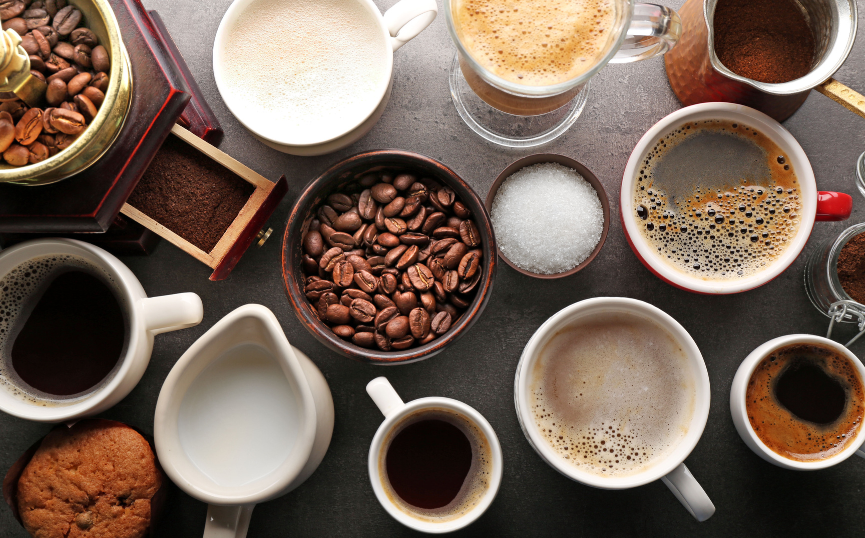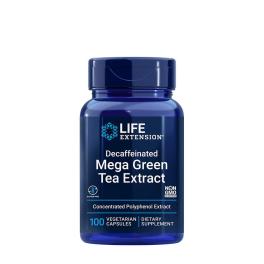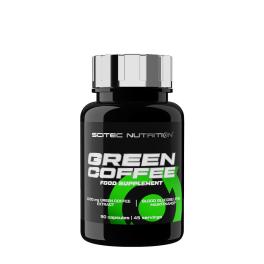All About Caffeine – Effects, Dosage, and Alternatives
Did you know that nearly 85% of the world’s population consumes caffeine in some form on a daily basis? This makes caffeine the most widely used psychoactive substance in the world. The most common source is, of course, coffee. In Hungary, 72% of the adult population drinks coffee daily, with most people reaching for a cup in the morning – often immediately after waking up (which, according to reliable sources, is actually not ideal).
In contrast, the rate of daily smoking among adults in Hungary is around 27%. While smoking is clearly harmful to health, moderate caffeine consumption can often bring about mental and physical alertness. When consumed as coffee or tea, it can also provide healthy antioxidants.
In today’s article, we uncover both the benefits and downsides of caffeine! We’ll also explore what the most optimal coffee-drinking routine might look like. Let’s start from the beginning!

In contrast, daily smoking among adults is around 27% (in Hungary), but while smoking is clearly harmful to health, moderate caffeine consumption can bring mental and physical freshness for many. In the form of coffee and tea, it can also provide healthy antioxidants.
In today’s article, we’ll unveil the benefits and downsides of caffeine! Additionally, we’ll embark on a journey to discover: what would be the most optimal coffee-drinking routine? Let’s start at the beginning!
What is caffeine, and how does it work?
Caffeine is a naturally occurring, psychoactive stimulant most commonly found in coffee, tea, energy drinks, and certain medications.
Surely everyone is familiar with our survival-boosting hormone: adrenaline?
Caffeine does not directly increase adrenaline levels but instead blocks the calming neurotransmitter adenosine in the brain.1 This hormone normally causes drowsiness, sluggishness, and fatigue—but by blocking it, caffeine causes the brain to not perceive fatigue, and neuronal activity increases. The adrenal glands respond to this, leading to increased adrenaline production. This results in typical “caffeine” effects such as:
- alertness
- faster heartbeat
- higher blood pressure
- increased sense of energy
- or even mild anxiety and restlessness in some individuals.
The common link between adrenaline and adenosine is cyclic adenosine monophosphate (cAMP). This secondary messenger amplifies the effects of adrenaline in the body. This property can be particularly significant in muscles and fat tissue—meaning caffeine consumption can lead to greater fat breakdown and energy mobilization.2
How much does caffeine energize you?
The extent and duration of its effects depend on many factors. The first factor influencing how caffeine is perceived is tolerance.3 With continuous caffeine intake, the amount needed to feel its energizing effects increases—and with strong caffeine tolerance, even its diuretic effect may diminish. To avoid caffeine tolerance, we must ensure that our total caffeine intake does not exceed 400 mg per day.4 Additionally, as soon as you notice it’s less effective, reduce the dose instead of increasing it. Instead, focus on restorative activities (e.g., stress-relief exercises, yoga, more sleep—even napping) to help energize you throughout the day.
Of course, it’s not just tolerance from “overdosing” that affects caffeine’s impact. Genetic factors, liver enzyme function, sleep quality, and even hormonal balance also influence how caffeine is perceived.
How quickly does caffeine produce its energizing effect?
The primary effect of caffeine appears 30–60 minutes after consumption—this is when it “kicks in.” The breakdown time of caffeine is about 4–6 hours, but it can last up to 8 hours.5 This is why it’s recommended to avoid caffeine consumption in the late afternoon.
If it’s energizing, why can I sleep after drinking coffee?

This can be attributed to several factors:
- The aforementioned tolerance: If you regularly consume caffeine, your body gets used to it, and the stimulating effect becomes less effective.
- Timing: If you drink it in the morning or early afternoon, it breaks down by evening, so it won’t interfere with sleep.
- Individual sensitivity: Some people metabolize caffeine faster, so its effects wear off more quickly.
- Insomnia or exhaustion: Sometimes fatigue is so strong that caffeine cannot suppress it.
Of course, the opposite effect can also be observed: in some people, late coffee consumption can disrupt their circadian rhythm—and this effect is generally more common. Therefore, Vitamin360’s advice is: definitely avoid late afternoon coffee consumption, as it’s not good for sleep. And if you barely feel its stimulating effect, then reduce your daily caffeine intake to lower your caffeine tolerance.
What about caffeine sensitivity?
Many people experience anxiety, rapid heartbeat, hand tremors, or stomach issues due to caffeine. Why might this be?
The most important factor is that there can be genetic differences in the rate of caffeine metabolism!
Caffeine is broken down in the liver by the CYP1A2 enzyme. This enzyme has two main genetic variants. In so-called “fast metabolizers”, caffeine is cleared quickly, so they feel its stimulating effects less. In contrast, in “slow metabolizers”, caffeine remains in the bloodstream longer, leading to stronger, longer-lasting effects and frequent side effects (e.g., tremors, anxiety).6
Additionally, people with more sensitive nervous systems or anxiety tendencies may experience heightened caffeine sensitivity.7 The list doesn’t end there:
- During pregnancy, caffeine metabolism slows significantly, which can lead to increased sensitivity.8
- In the luteal phase of the menstrual cycle (before PMS), the response to caffeine may also be heightened.9
- People with thyroid issues often experience hypersensitivity.10
What to consume in case of caffeine sensitivity?
The drinks listed below provide energy-boosting effects without caffeine in other ways. While these drinks may not be as potent as caffeine, they can help balance alertness and fatigue throughout the day.
- Ginger tea – mildly stimulating, improves blood circulation.
- Ginseng-containing drinks – increase energy levels without overstimulating.
- Lemon water – hydrates and has a refreshing effect.
- Beet juice – its nitrates increase blood flow and oxygen supply.
What about pre-workout supplements?
The effects of pre-workout supplements are largely due to caffeine (followed by pump-enhancing ingredients and creatine). Because of this, some pre-workouts almost max out the daily recommended caffeine intake. These supplements can contain 150–350 mg of caffeine per serving. Those sensitive to caffeine should opt for caffeine-free pre-workouts, which may not “hit” as hard but can still have mild ergogenic effects by enhancing blood flow.
Vitamin360 recommends: FA - Fitness Authority’s Stimulant-Free Pre-Workout Performance Enhancer: Xtreme Napalm Pre-Contest Pumped! Its ingredients strongly stimulate blood flow, enhancing the “pump” sensation.11 Taurine and plant extracts also improve focus and optimize the “stress response” during workouts.12,13
Does caffeine really raise blood pressure?
Yes, caffeine does temporarily increase blood pressure because it inhibits adenosine’s effect, which normally relaxes blood vessels. The result is tighter, narrower blood vessels, which increase blood pressure. However, this effect is temporary and short-lived. On average, systolic blood pressure rises by 5–15 mmHg, and diastolic pressure increases slightly less. The effect kicks in within 30 minutes and lasts about 3–4 hours.14
However, in regular consumers, the aforementioned tolerance develops, meaning blood pressure increases are much milder or absent. Several studies suggest that long-term moderate coffee and tea consumption does not permanently raise blood pressure and may even have positive effects on circulation and the vascular system due to their antioxidants.15
Based on this, caution with caffeine consumption is advised in the following cases:
- Hypertension (above 140/90) requires strict limitation of caffeine intake.
- Blood pressure spikes or heart rhythm disorders warrant avoiding caffeinated drinks.
- During pregnancy, most medical recommendations suggest a maximum of 200 mg of caffeine per day.
Caffeine’s diuretic effect
Caffeine may have a mild diuretic effect.16 This is also explained by its effect on adenosine—simultaneously, it slightly increases kidney blood flow and enhances sodium and water excretion through urine. This effect can be significant for someone not accustomed to caffeine, but with caffeine tolerance, it may diminish or not be felt at all. For tolerant individuals, fasting coffee consumption combined with exercise can significantly enhance this effect.
Overall, it’s true that more water should be consumed alongside coffee.
Three cases where caffeine’s diuretic effect may cause issues:
- At very high doses (over 500–600 mg/day)
- In hot weather or during exercise, if fluids aren’t replenished
- In an already dehydrated state (e.g., hangover, vomiting, diarrhea)
Coffee on an empty stomach? Pros and cons

Pros: On an empty stomach, caffeine is absorbed faster, so it takes effect sooner. This can be particularly helpful for morning grogginess, drowsiness, or lack of focus. In some people, it reduces hunger, helping control morning meals (e.g., during intermittent fasting).
Cons: Coffee (especially strong black coffee) increases hydrochloric acid production, which can cause heartburn, reflux, or acid regurgitation, especially on an empty stomach. Regular consumption on an empty stomach may also lead to stomach lining irritation.
Based on this, the recommendation is as follows:
- For healthy digestion and a not overly sensitive stomach, morning coffee on an empty stomach is not necessarily an issue.
- For those prone to heartburn, insulin resistance, blood sugar issues, or thyroid problems, avoid coffee on an empty stomach.
- Black coffee is allowed during fasting, but pay attention to individual reactions.
Is coffee a fat burner?
In short, yes: caffeine has a mild fat-burning effect.25 The main issue is the same as with pre-workout supplements: thermogenic fat burners with high caffeine content may already max out the recommended daily caffeine intake.
Thus, Vitamin360 suggests naturally sourcing caffeine without overdoing it, as it has a mild fat-burning effect. Instead, focus on diet and exercise: create a calorie deficit. Once fat loss is on track, support it with a natural, caffeine-free fat burner like Life Extension AMPK Metabolic Activator supplement.
Are coffees and teas healthy, then?
Yes, if you’re a health-conscious caffeine consumer, ditch caffeine pills and energy drinks and opt for natural antioxidant-rich drinks like coffee and tea.
Fun fact: The “unofficial” unit for measuring antioxidant effects is ORAC.17 The ORAC test examines how effectively a substance neutralizes free radicals, particularly peroxyl radicals.
Here’s a list of the healthiest caffeine sources based on ORAC measurements:18
|
Caffeine Source |
ORAC Value (μmol Trolox-eq/g) |
Notes |
|
Matcha tea (ground green tea) |
1300–1600 |
Highly concentrated, whole leaf consumed |
|
Green tea (dried leaf) |
1200–1500 |
Rich in catechins |
|
Black tea |
1100–1400 |
Dominated by theaflavins, thearubigins |
|
Coffee (roasted, filtered) |
900–1200 |
Chlorogenic acids and phenolic acids |
|
Yerba mate |
600–900 |
Depends on processing and quality |
|
Guarana powder |
500–800 |
Flavonoids and tannins |
|
Energy drinks |
0–100 |
Generally very low or no antioxidants |
How can I track how much caffeine I’ve consumed?
Caffeine content varies significantly by drink, but the table below can help you accurately calculate your daily caffeine intake.19-
|
Drink Type |
Caffeine Content (mg) |
Notes |
|
Espresso (30 ml) |
~63 mg |
Double: ~125 mg |
|
Filter coffee (long) |
~90–120 mg |
Depends on preparation |
|
Instant coffee (200 ml) |
~60–80 mg |
Depends on brand and dosage |
|
Cold brew (diluted) (250 ml) |
~150–200 mg |
Highly variable |
|
Cold brew (concentrated) (250 ml) |
~250–300+ mg |
As a concentrate |
|
3-in-1 instant coffee (200 ml) |
~40–60 mg |
Weaker, sweetened |
|
Decaf coffee (200 ml) |
~2–5 mg |
Never completely caffeine-free |
|
Black tea (250 ml) |
~40–70 mg |
Stronger if steeped longer |
|
Green tea (250 ml) |
~20–45 mg |
More moderate |
|
White tea (250 ml) |
~15–30 mg |
Mild, gentle tea |
|
Matcha (1 g powder) (~100 ml) |
~60–80 mg |
Stronger in powder form |
|
Yerba mate (250 ml) |
~65–85 mg |
Stimulating South American tea |
|
Red Bull (250 ml) |
80 mg |
Standard energy level |
|
Monster (500 ml) |
~160 mg |
2 servings’ worth of energy |
|
Coca-Cola (330 ml) |
~32 mg |
Classic soft drink |
|
Pepsi (330 ml) |
~38 mg |
Slightly more than Coca-Cola |
|
Cola Zero / Light (330 ml) |
~34–45 mg |
Varies by brand |
|
Dark chocolate (30 g) |
~20–35 mg |
The darker, the more caffeine |
|
Milk chocolate (30 g) |
~5–10 mg |
Minimal amount |
|
Caffeine tablet |
~100–200 mg / tablet |
Particularly strong source |
Summary
Caffeine is an effective and safe stimulant for many, but it doesn’t work for everyone, and not everyone can use it. It’s important to monitor your body’s reactions, and if you experience unpleasant side effects, consider trying natural alternatives or simply reducing the dose. Sleep, exercise, balanced nutrition, and stress relief remain the most powerful and side-effect-free energizers.
It’s worth noting that if you have any cardiovascular issues, urinary tract conditions, thyroid or kidney issues, or neurological problems, you should consult your doctor about when and how much caffeine is safe for you to consume.
- Institute of Medicine (US) Committee on Military Nutrition Research. Caffeine for the Sustainment of Mental Task Performance: Formulations for Military Operations. Washington (DC): National Academies Press (US); 2001. 2, Pharmacology of Caffeine. Available from: https://www.ncbi.nlm.nih.gov/books/NBK223808/
- Farias-Pereira R, Park CS, Park Y. Mechanisms of action of coffee bioactive components on lipid metabolism. Food Sci Biotechnol. 2019 Aug 12;28(5):1287-1296. doi: 10.1007/s10068-019-00662-0. PMID: 31695927; PMCID: PMC6811484.
- Ammon HP. Biochemical mechanism of caffeine tolerance. Arch Pharm (Weinheim). 1991 May;324(5):261-7. doi: 10.1002/ardp.19913240502. PMID: 1888264.
- https://examine.com/supplements/caffeine/?show_conditions=true
- https://www.sciencedirect.com/topics/nursing-and-health-professions/caffeine
- Mahdavi S, Palatini P, El-Sohemy A. CYP1A2 Genetic Variation, Coffee Intake, and Kidney Dysfunction. JAMA Netw Open. 2023 Jan 3;6(1):e2247868. doi: 10.1001/jamanetworkopen.2022.47868. PMID: 36701157; PMCID: PMC9880799.
- Cigler, T. P., Flynn, J., & Guite, J. W. (2005). Effects of caffeine on thyroid function. Thyroid Research, 4(3), 15-20.
- Evans, S. M., & Griffiths, R. R. (1999). Caffeine tolerance and choice in humans. Psychopharmacology, 147(2), 217–223. https://doi.org/10.1007/s002130051070
- Kugelmass, A. D., Stern, D. T., & Jacobson, J. (1995). Caffeine metabolism in pregnancy: effect of gestational age and smoking. Obstetrics & Gynecology, 85(5), 718-721.
- Nehlig, A. (2016). Interindividual differences in caffeine metabolism and factors driving caffeine consumption. Pharmacological Reviews, 68(3), 704–727. https://doi.org/10.1124/pr.115.011523
- Barkhidarian B, Khorshidi M, Shab-Bidar S, Hashemi B. Effects of L-citrulline supplementation on blood pressure: A systematic review and meta-analysis. Avicenna J Phytomed. 2019 Jan-Feb;9(1):10-20. PMID: 30788274; PMCID: PMC6369322.
- De Carvalho FG, Galan BSM, Santos PC, Pritchett K, Pfrimer K, Ferriolli E, Papoti M, Marchini JS, de Freitas EC. Taurine: A Potential Ergogenic Aid for Preventing Muscle Damage and Protein Catabolism and Decreasing Oxidative Stress Produced by Endurance Exercise. Front Physiol. 2017 Sep 20;8:710. doi: 10.3389/fphys.2017.00710. PMID: 28979213; PMCID: PMC5611412.
- Bonilla DA, Moreno Y, Gho C, Petro JL, Odriozola-Martínez A, Kreider RB. Effects of Ashwagandha (Withania somnifera) on Physical Performance: Systematic Review and Bayesian Meta-Analysis. J Funct Morphol Kinesiol. 2021 Feb 11;6(1):20. doi: 10.3390/jfmk6010020. PMID: 33670194; PMCID: PMC8006238.
- Geleijnse JM. Habitual coffee consumption and blood pressure: an epidemiological perspective. Vasc Health Risk Manag. 2008;4(5):963-70. doi: 10.2147/vhrm.s3055. PMID: 19183744; PM,才能PMCID: PMC2605331.
- Voskoboinik A, Koh Y, Kistler PM. Cardiovascular effects of caffeinated beverages. Trends Cardiovasc Med. 2019 Aug;29(6):345-350. doi: 10.1016/j.tcm.2018.09.019. Epub 2018 Oct 4. PMID: 30301595.
- Marx B, Scuvée É, Scuvée-Moreau J, Seutin V, Jouret F. Mécanismes de l'effet diurétique de la caféine [Mechanisms of caffeine-induced diuresis]. Med Sci (Paris). 2016 May;32(5):485-90. French. doi: 10.1051/medsci/20163205015. Epub 2016 May 25. PMID: 27225921.
- Cao G, Alessio HM, Cutler RG. Oxygen-radical absorbance capacity assay for antioxidants. Free Radic Biol Med. 1993 Mar;14(3):303-11. doi: 10.1016/0891-5849(93)90027-r. PMID: 8458588.
- https://www.ars.usda.gov/ARSUserFiles/80400525/articles/aicr07_orac.pdf
- McCusker, R. R. et al. (2003). Caffeine Content of Specialty Coffee Drinks. Journal of Analytical Toxicology, 27(7), 520–522.
- Mitchell, D. C. et al. (2014). Caffeine and Coffee Consumption and Metabolic Outcomes. Food & Function, 5(8), 1718–1724.
- Fuller, M. & Rao, N. Z. (2017). The effect of extraction parameters on cold brew coffee chemistry. Scientific Reports, 7, 17979.
- Charalampopoulos, D. et al. (2016). Caffeine and Catechin Content of Tea Infusions and Their Biological Activity. Journal of Food Science, 81(1), C35–C42.
- USDA National Nutrient Database for Standard Reference, Release 28 (2018).
- Heck, C. I. & de Mejia, E. G. (2007). Yerba Mate Tea (Ilex paraguariensis): A Comprehensive Review on Chemistry, Health Implications, and Technological Considerations. Journal of Food Science, 72(9), R138–R151.
- EFSA Panel on Dietetic Products, Nutrition and Allergies (NDA) (2015). Scientific Opinion on the safety of caffeine. EFSA Journal 13(5):4102.
- Pendergast, D. R. et al. (2018). Caffeine content of caffeinated beverages consumed by U.S. teens and its consequences. Nutrition Reviews, 76(1), 29–38.
- Acheson KJ, Gremaud G, Meirim I, Montigon F, Krebs Y, Fay LB, Gay LJ, Schneiter P, Schindler C, Tappy L. Metabolic effects of caffeine in humans: lipid oxidation or futile cycling? Am J Clin Nutr. 2004 Jan;79(1):40-6. doi: 10.1093/ajcn/79.1.40. PMID: 14684395.










